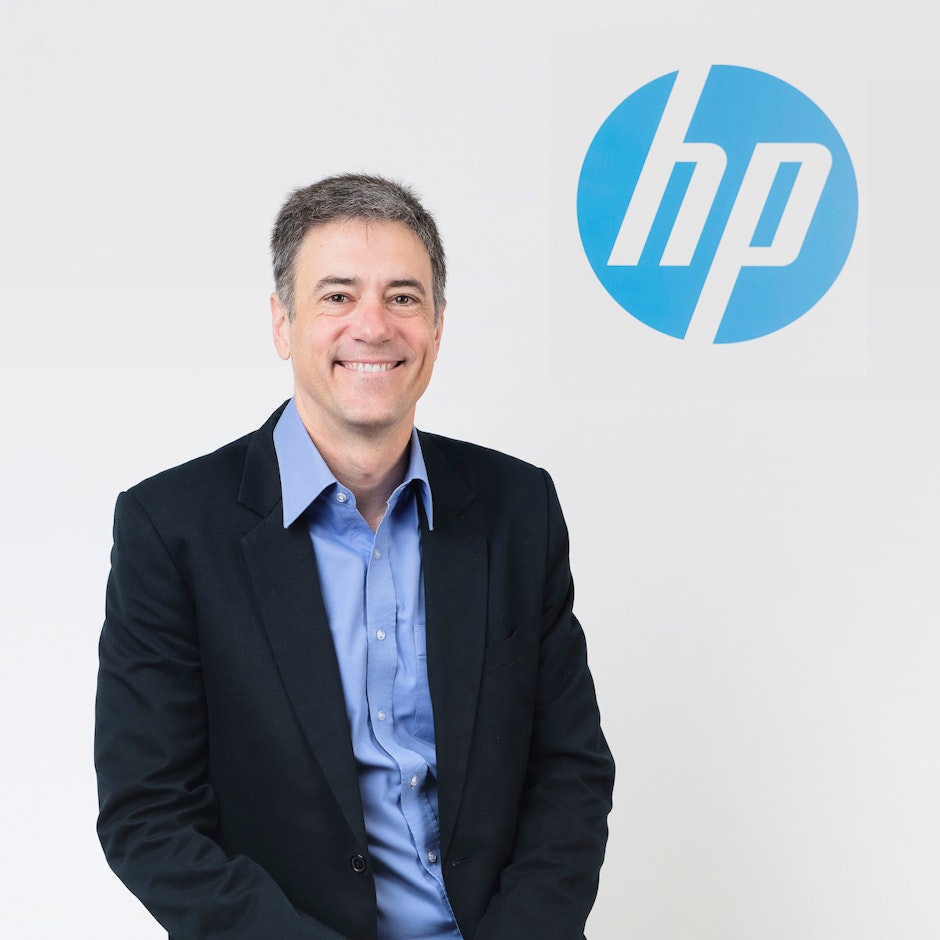Luis Casado on the importance of a growth-hacking approach to B2B brand marketing
The head of worldwide personal systems commercial marketing for HP believes in purposeful creativity and a growth-hacking approach to brand marketing

Marketers talk often about the art of balancing brand and demand. For the last three years, it’s been a balancing act performed on a rollercoaster. As HP’s head of worldwide personal systems commercial marketing, Luis Casado explains that the relationship of brand to demand ultimately depends on the relationship between supply and demand – and that relationship has been far from stable.
“In the famous conversation between brand and demand, we went from 100% brand during the pandemic when demand was rocketing and supply was limited, into a perfect storm where demand decreased as factories were pumping out supply,” he shares. “It feels a bit like a never-ending ride, because once one situation stabilises, you find yourself in another – whether that’s war or inflation. The question is, how do you react as a marketing organization?”
Why entertaining B2B ads are just half the story
It's a question to which Casado has a very clear answer. In his mind, the conversation between brand and demand isn’t just about which gets the largest share of the budget. It goes deeper to the question of what type of brands you build. In his 12 years working at HP, he has witnessed a huge evolution in the culture of B2B marketing, while also identifying a crucial misunderstanding that can leave brands vulnerable when pressures increase.
“A decade ago, B2B marketing was boring – just specs and a picture,” he explains. “Then we evolved to deliver better creative and more differentiated advertising, not just from HP, but from many of the other companies fighting for the same segments. There was a lot of emotion and recognition in the ads, but there was little to no brand linkage and that aspect is massively important. Marketers got lost in the task of creating something great and entertaining but forgot that the role of creativity must go beyond that. It needs to focus on people recognizing and remembering the brand that developed the ad.”
If you want a brand that can deliver long-term, no matter how many twists and turns markets may take, you don’t just need ad awareness. You need an awareness of the brand behind that ad and a propensity to bring that brand to mind when it matters most. For Casado, that involves positioning your brand in situations that are salient and timely for your audience.
Brand salience through brand relevance
“Market relevance really matters,” he says. “The first thing I do is listen to our markets and ask myself, what is the number one topic they’re focusing on at the moment? Right now, that topic is hybrid work. Employers are asking how they can attract and retain people, how to protect them when they work remotely, and whether they need a printer at home. Employees are asking themselves about how they want to work and whether they have the right equipment to work that way. Those are the conversations we want the HP brand to be associated with.”
It's not just presenting brands in the right contexts that matters. Casado argues that, if you want your brand to have a measurable impact on the bottom line, it’s important to have a clear idea about exactly how that will happen.
“When I am managing an initiative, I want to know what the business impact of that initiative should be,” Casado explains. “For example, do I need to contribute to saliency or market share? Do I need to support a pricing premium? There are various objectives that you can set for a brand campaign, and these are the objectives that I want to brief an agency with.”
Growth-hacking brand strategy
A strong sense of how brand equity translates into growth makes it easier to determine if plans are on track – and gives marketers a clear focus for creative thinking. “You can’t be successful in marketing today without understanding how to use technology and data to prove value,” says Casado. “It enables us to apply a growth-hacking approach to campaigns. LinkedIn is a massive factory for creative experimentation where you can apply new tactics and measure the outcome against what matters. It involves a change in mentality from traditional marketing, where your investments were once static and initiatives were being implemented for six months or longer. Now you can identify where the issues are and try new things.”
Casado is committed to purposefully experimenting to increase brand impact, but he doesn’t demand immediate impact. As he sees it, a more sophisticated understanding of a brand buys marketers time to invest for the long-term and explain those investments to the finance team.
“As a marketer, I’m most comfortable with colleagues who are interested in the finance of marketing rather than just wanting to be entertained,” he says. “We’ve found that consideration is the brand metric that correlates best with future market share. When we make big bets in terms of marketing investment in a country, we can see consideration move, and later on, we see market share respond. We’re able to size that in terms of the budget that we allocate and revenue and profit that we ultimately receive, and our business leaders and CFO can see that link very strongly. The longer buying cycles involved in B2B means it takes longer versus consumer marketing, but when a company wins with consideration, sooner or later, they win on share too.”

